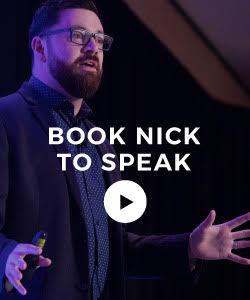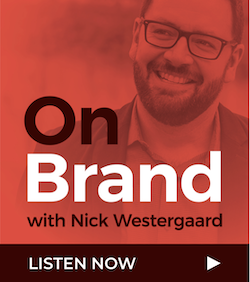There are many things about traditional media that are broken. However, traditional media dynamics such as top-of-mind awareness and word-of-mouth marketing are alive and well and have only been enhanced by new media and technology.
The only thing that’s more unsettling than change is when we hear that things aren’t as different as we think. It sounds too good to be true but it is. Especially in marketing today. For example, recently I found myself shopping for a new email marketing platform and witnessed first hand these classic dynamics at play.
It Still Pays to Be Top of Mind
If you were among the millions who listened to last fall’s hit podcast Serial, you know there’s one email app leading at top of mind: MailChip. Each episode of the podcast opened with a sponsorship message featuring people on the street talking about MailChimp — or “Mail Kimp” as one confused passerby famously quipped.
Naturally when the time came to shop for a new platform, MailChimp was on the short list. But top of mind didn’t carry the day on its own. According to Gallup, over a third of American consumers turn to social media to help them make their purchase decisions. I was no exception to this rule, turning to my Facebook friends for advice.
And what was referred most often? MailChimp. The brands’ top-of-mind awareness was bolstered by social word of mouth and testimonials as earnest as the podcast sponsorship messages. In short, I was sold.
The Proof Is in the Pudding
We struggle with top-of-mind awareness because it feels soft. It feels as though we’re throwing money after nothing. That’s why we’re so quick to look for the numbers. Amobee Brand Intelligence reviewed MailChimp’s Twitter activity and found a spike in social conversations at the height of Serial’s run. Seventy eight percent of these brand mentions were either positive or neutral.
As digital strategist Jason Falls is fond of saying, impressions and brand mentions don’t pay the rent. While MailChimp has declined to elaborate, they have noted an uptick in sign-ups for their service.
A Touch of Humor for the Extra Point
It may have seemed off-topic in a post about the value of top of mind to bring up MailChimp’s sponsorship creative. However, this led to an extra cherry on their social success sundae. That memorable “Mail Kimp” mispronunciation quickly became a meme throughout the zeitgeist, both online and off. Take for example, this fun Mail Kimp remix.
As with any cultural phenomenon, Serial was widely parodied by the best in the business including Funny or Die and Saturday Night Live. Sponsors don’t often make the cut of what goes into a tight parody. Not so, with Mail Kimp — I mean, MailChimp. The Funny or Die parody even includes a visit from the MailChimp executives just before the two-minute point. (NOTE: This video contains some language and may be NSFW).
Humor can be tricky for brands. It doesn’t come naturally for many and it can often feel like a third-rail seldom worth grabbing. MailChimp embraced the Mail Kimp conversation by responding to humorous tweets. MailChimp CEO Ben Chestnut even added “mail—kimp?” to his Twitter bio.
Top of mind is alive and well. While it’s never been easy to demonstrate rock-solid ROI, that’s not to say that we shouldn’t try. But let’s not arbitrarily apply an elevated expectation to digital top-of-mind awareness.
Where top of mind can pay off online is via social media. Word-of-mouth referrals can accelerate decision making, as humor-fueled memes pack a powerful punch.
Mail Kimp matters. What are you doing to ensure that your brand is top of mind with the right audience both online and off?









